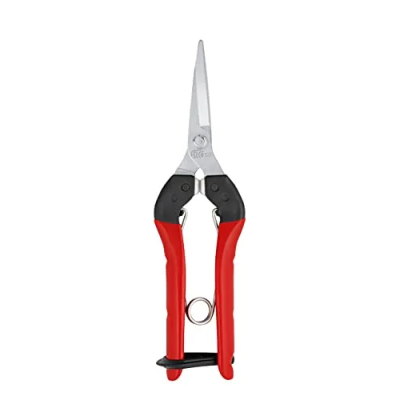Chervil is a staple of French cuisine, and you'll be amazed by how easy and quick it is to grow in herb gardens or pots
A complete guide to growing chervil from seed
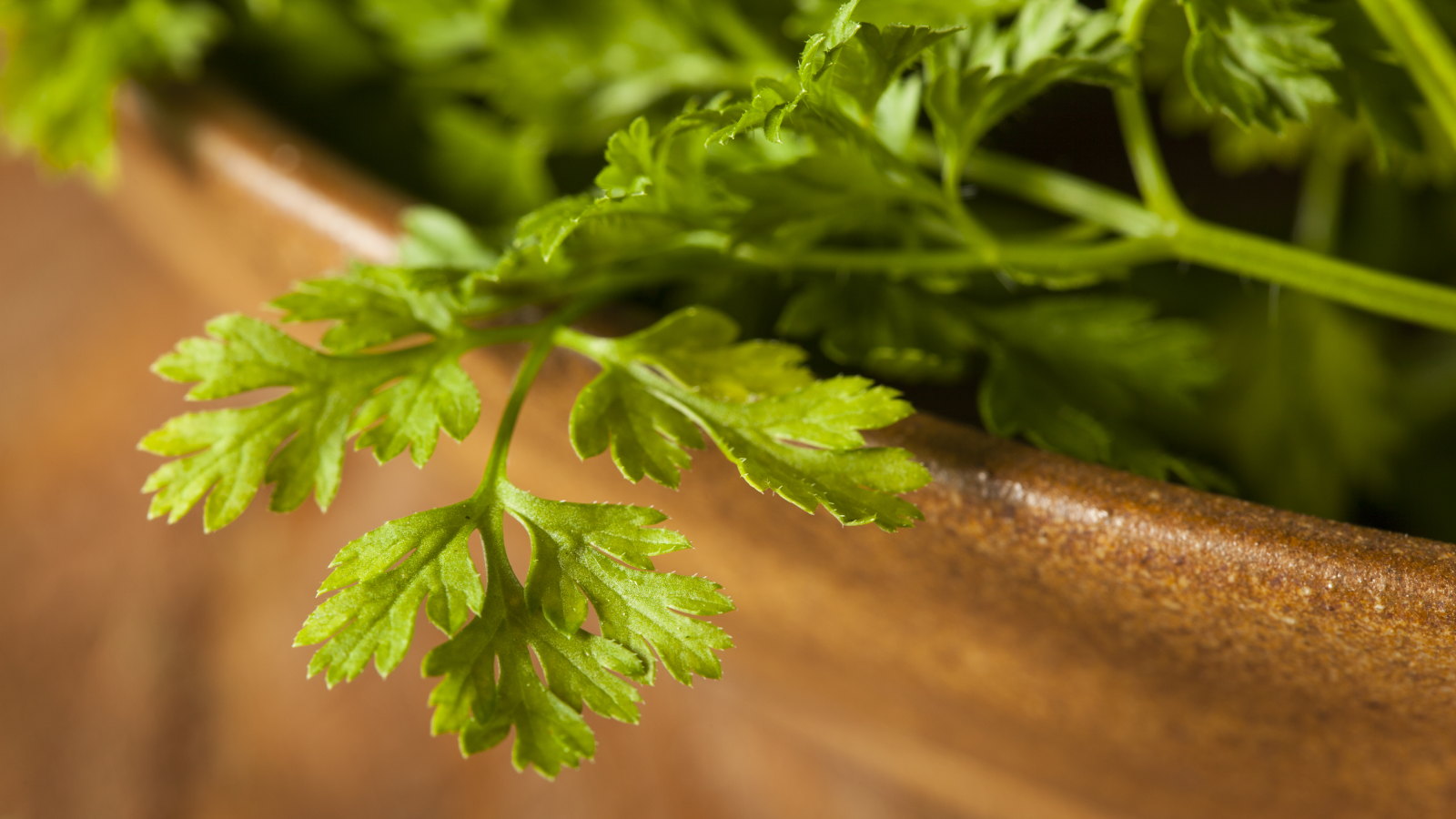
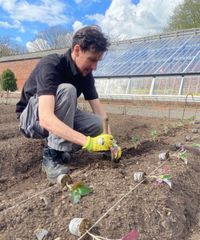
Chervil is a mainstay in French cooking and one of the classic French seasoning blend known as 'fines herbes' along with parsley, chives, and tarragon. However, if you enjoy doing a lot of French cooking, you may struggle to find chervil in grocery stores – so why not grow your own?
The good news is that chervil is a fast-growing, simple herb to grow at home in beds or containers. You can be harvesting the mild-flavored foliage in as little as eight weeks from sowing the seeds. As long as you sow at the right time, chervil requires little maintenance, and you can enjoy a bounty of sweet leaves throughout the season.
If you are looking for new plants to add to your herb garden ideas, why not try chervil? This guide deep-dives into how to grow chervil, complete with expert tips for all you need to know from sowing seeds to harvesting leaves.
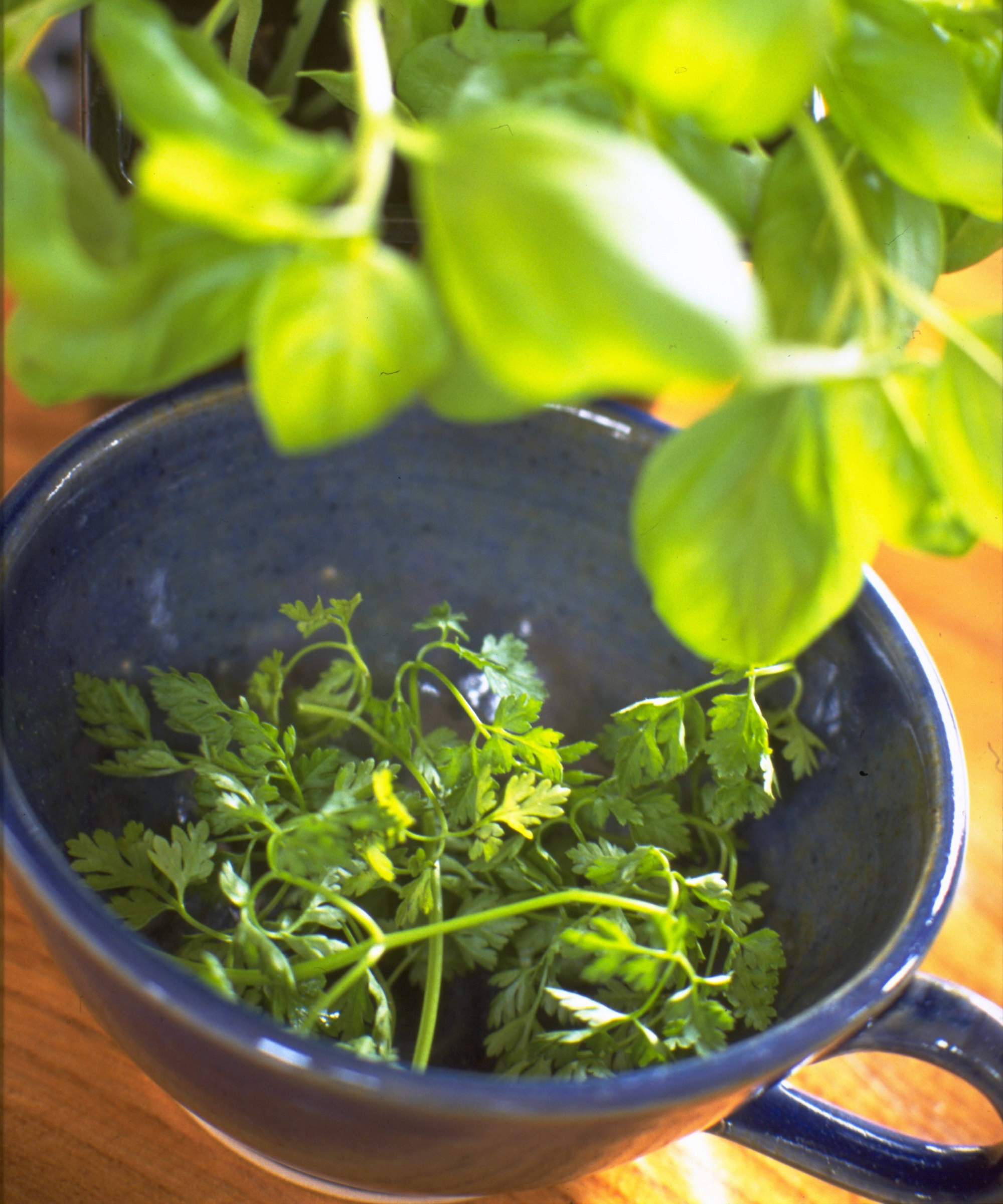
What is chervil?
Chervil (Anthriscus cerefolium) is an edible aromatic herb sometimes known as French parsley. It is closely related to parsley (they are both in the Apiaceae family), and the delicate foliage has a flavor with subtle hints of both parsley and aniseed.
The biennial herb grows to around two feet tall and likes to grow in full sun or partial shade, in rich and well-draining soil. Chervil produces bright green stalks, stems, and leaves. It is grown for the finely-toothed leaves that are best used fresh.
Chervil is often used to season poultry and seafood dishes, or soups and sauces. The leaves can also be used as a garnish or as the aforementioned 'fines herbes', which are added late to dishes as they don’t need prolonged cooking.
How to grow chervil from seed

You can plant chervil at different times of the year, depending on your climate. It is a cool-season herb that struggles to germinate in heat and bolts quickly, which dictates the best time to propagate the herb.
Design expertise in your inbox – from inspiring decorating ideas and beautiful celebrity homes to practical gardening advice and shopping round-ups.
In cooler US hardiness zones 3-7, you can sow chervil in spring, while in zones 8-10 it is best sown in fall once temperatures drop below 65ºF. 'Chervil prefers full sun and cool temperatures,' claims Ashleigh Smith from True Leaf Market. 'When growing in warmer regions and climates, consider planting in a partial shade location to reduce heat stress.'
Wherever you are, it is recommended to direct sow chervil into its growing position. The plant suffers when you transplant seedlings started indoors, due to the root disturbance. So it is best to sow seeds outdoors. If you do wish to sow seeds indoors four weeks before the last frosts, use biodegradable pots to avoid disturbing the roots.
Sow seeds thinly in half-inch deep drills, with rows spaced 12 inches apart, and keep the soil moist. Germination should take 1-2 weeks and, when seedlings develop, thin plants to 6-8 inches apart. For a consistent supply of chervil, successively plant seeds every 2-3 weeks.
Slugs and snails can be an issue when growing chervil from seed, as the hungry pests like to nibble seedlings. There are slug control methods you can use to combat this and stop slugs from destroying plants, including surrounding plants with physical barriers like grit or crushed eggshells, placing beer traps nearby, or using companion planting to attract natural predators.
These chervil seeds at True Leaf Market can be sown into your garden for an abundant crop of leaves.

Ashleigh Smith is the Managing Editor at True Leaf Market with a bachelor's degree in horticulture from Brigham Young University - Idaho. True Leaf Market is a nationally certified organic, non-GMO seed and horticultural company based in Salt Lake City, Utah.
How to grow chervil - care tips
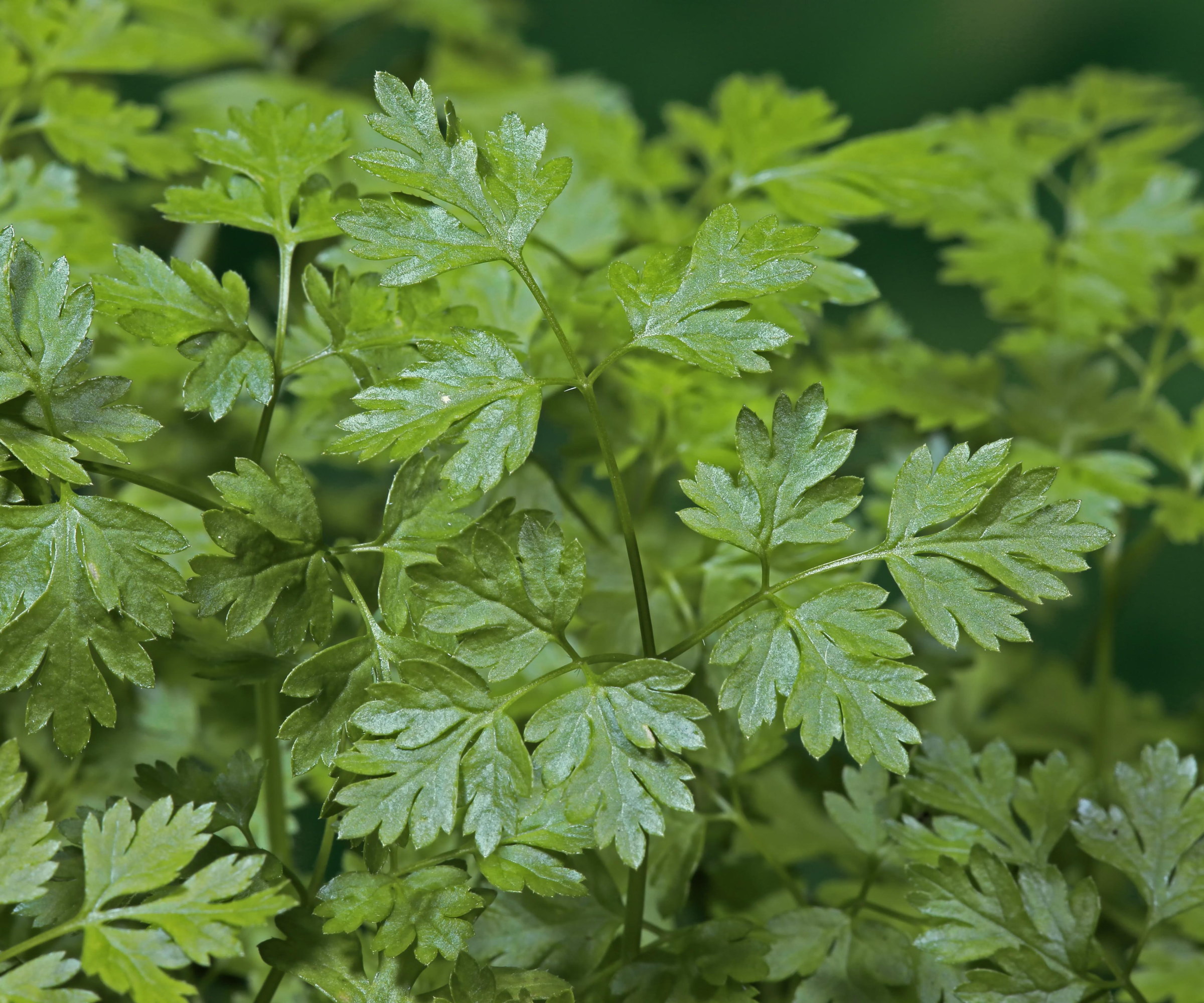
- Watering - Keep the soil consistently moist, especially during dry spells where a lack of water can cause chervil to bolt. Regular deep watering in warm periods will keep plants happy, but be careful of how you water plants to avoid one common fungal problem. 'When watering, apply the water directly to the soil rather than spraying it to help prevent the development of powdery mildew,' warns Ashleigh Smith. As the chervil foliage is delicate, watering from overhead also risks damaging it. Mulching around plants is advisable to retain moisture in the soil and smother weeds.
- Feeding - In most circumstances, you do not need to fertilize chervil. The best course of action is to add compost or well-rotted manure to the planting site beforehand, and this will supply enough nutrients to see the plants through the season. Chervil in containers will require additional nutrients courtesy of a liquid nitrogen-rich fertilizer at least once a month, like this nitrogen fertilizer available at Amazon.
- Pests - On top of slugs and snails being attracted to seedlings, the other major pest for chervil is aphids. Aphids will suck sap from plants, and a large infestation is capable of destroying them. There are some simple ways to get rid of aphids, including knocking them off the plant with a strong blast of water and spraying them with insecticidal soap. Adding companion plants such as calendula or nasturtiums attracts ladybugs, lacewings, and parasitic wasps, which are natural predators of aphids.
- Pruning - There is not much pruning required with chervil. It is as simple as removing any flower stalks as they appear to channel the plant’s energy back into producing leaves rather than flowers or seeds. This simple trimming will keep the plant looking neat and developing new leaves. You can leave some flower stalks at the end of the season if you wish to collect seeds for future use.
- Harvesting - Start to harvest chervil around 8-10 weeks after sowing. It is a cut-and-come-again crop, and you can pick leaves as and when required, taking only a few of the older, outer leaves at a time. Use clean and sharp pruning shears, garden snips, or scissors to snip off small leaves and stems at the base. Regular harvesting keeps the plant from flowering, which is ideal as leaves on flowering stems have a more bitter taste.
How to grow chervil in pots
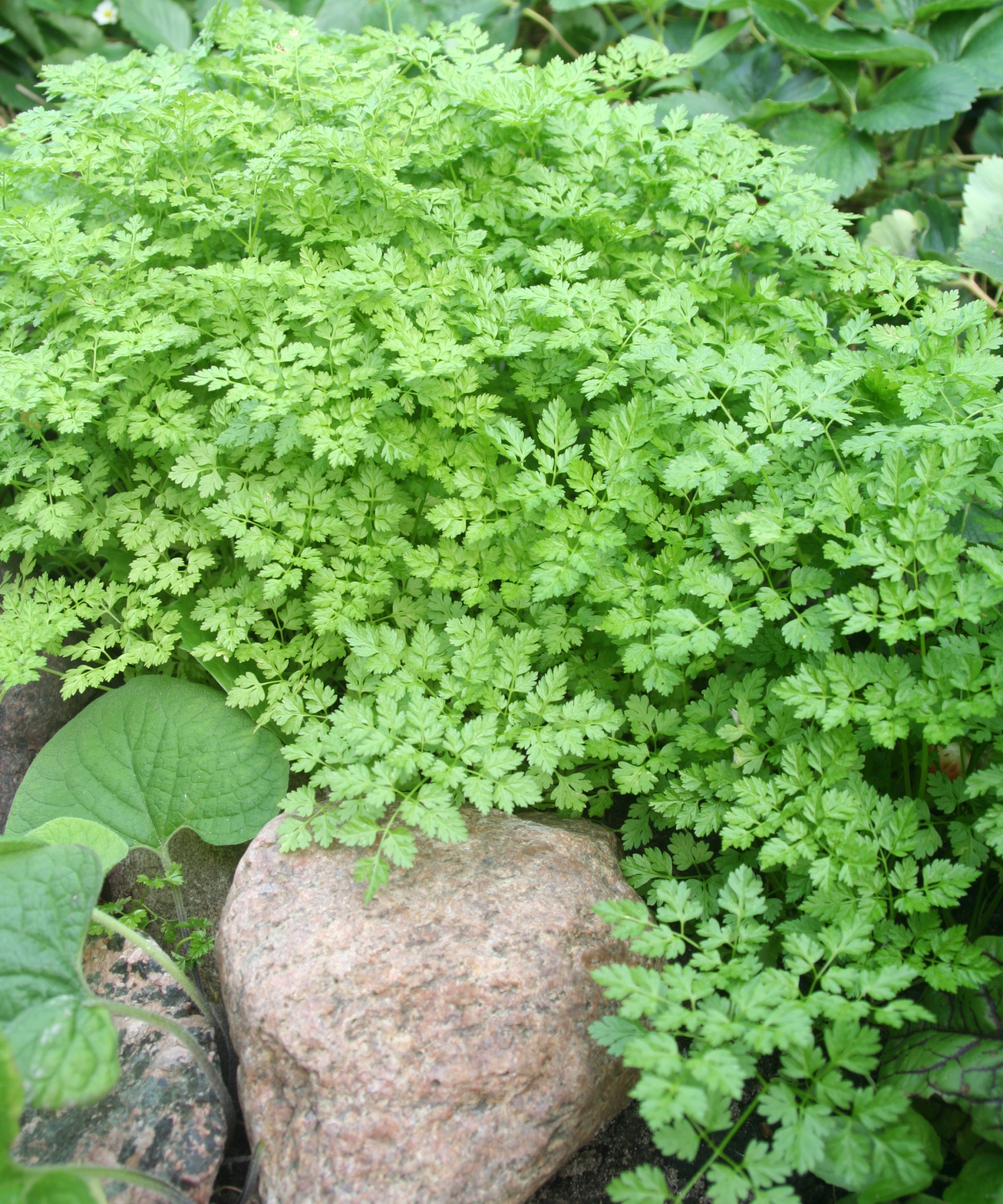
Chervil is suited to growing in container gardens or herb planters to provide harvests in small spaces.
There are advantages to growing chervil in pots to discover, just be sure to pick a container at least 12 inches tall and wide and with drainage holes in the bottom to prevent waterlogging.
'Growing in containers can keep this delightful herb more accessible and give the grower more control over changing summer temperatures,' claims Ashleigh Smith.
'As the weather warms, continue harvesting through the summer by moving your chervil plants to a partial sun location or bringing them indoors.'
As well as extending the season in warmer weather, you can also bring chervil in pots indoors for winter to prolong the harvesting by growing herbs indoors on a windowsill.
FAQs
Does chervil grow back every year?
Chervil is a biennial or short-lived perennial herb commonly grown as an annual plant. It has a quick-growing cycle and bolts in hot weather.
Is chervil frost hardy?
Chervil can survive light frosts, but is killed by heavy frosts and snow.
If you want to grow chervil’s close relative, and another of the 'fines herbes', parsley, it is also a simple herb to grow at home. Our guide on how to grow parsley features a wealth of tips to help you have thriving plants and a top harvest of leaves – whether you grow flat or curly parsley.
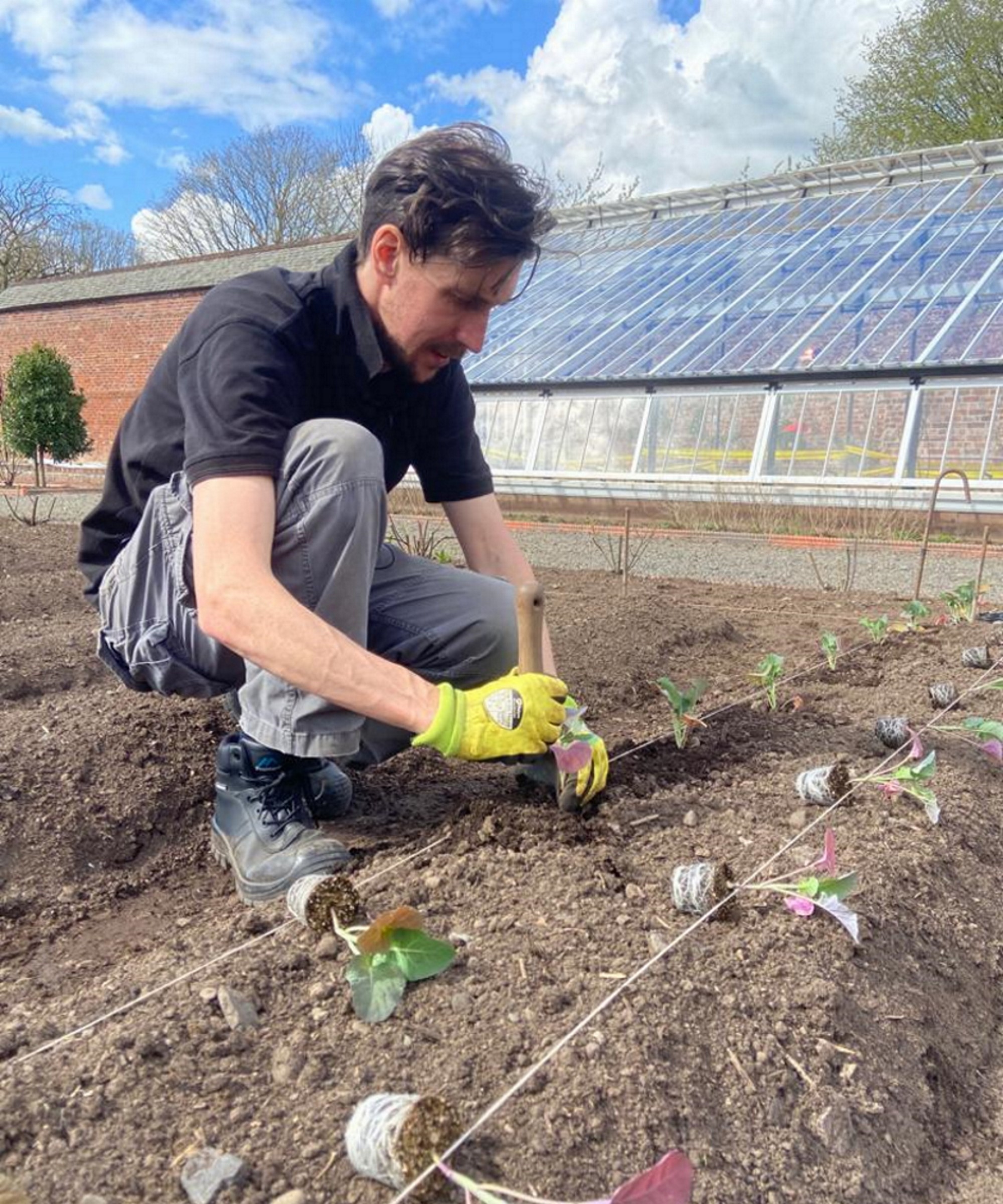
Drew has worked as a writer since 2008 and was also a professional gardener for many years. As a trained horticulturist, he worked in prestigious historic gardens, including Hanbury Hall and the world-famous Hidcote Manor Garden. He also spent time as a specialist kitchen gardener at Soho Farmhouse and Netherby Hall, where he grew vegetables, fruit, herbs, and cut flowers for restaurants. Drew has written for numerous print and online publications and is an allotment holder and garden blogger. He is shortlisted for the Digital Gardening Writer of the Year at the 2025 Garden Media Guild Awards.
You must confirm your public display name before commenting
Please logout and then login again, you will then be prompted to enter your display name.

